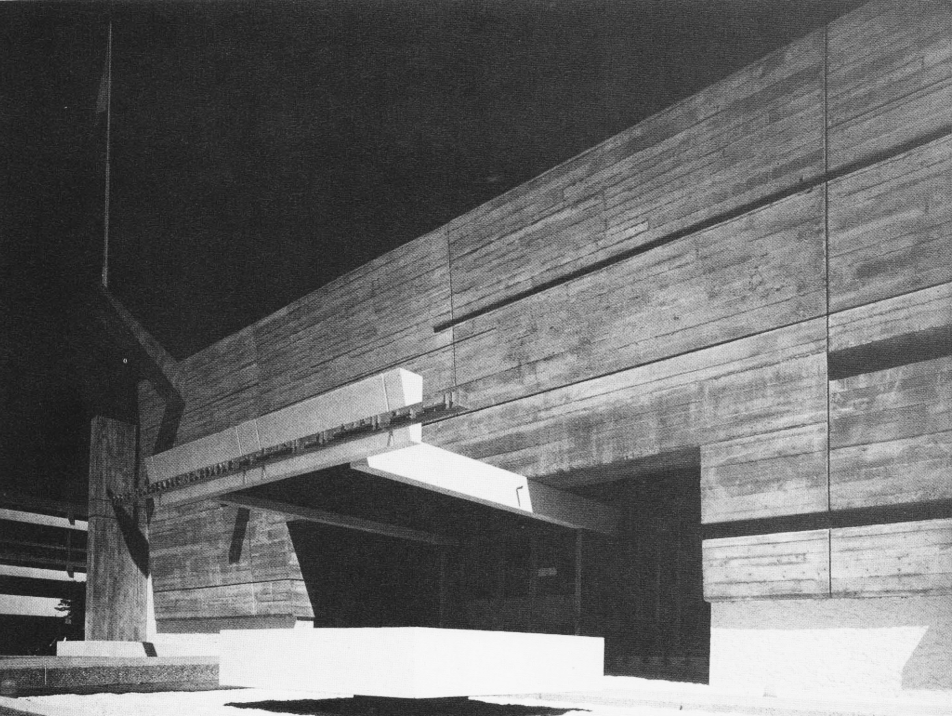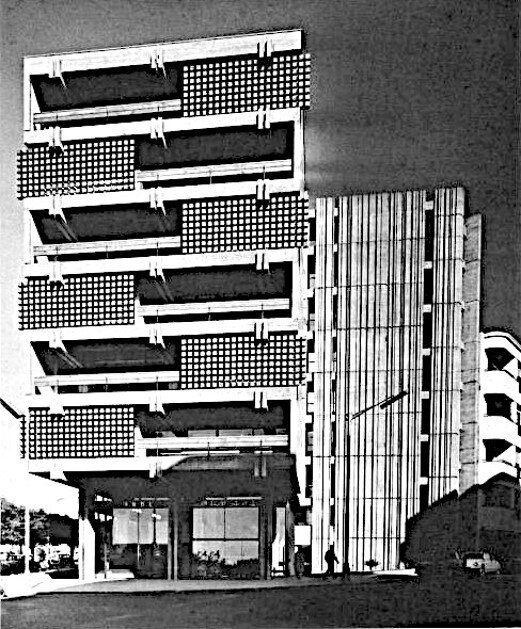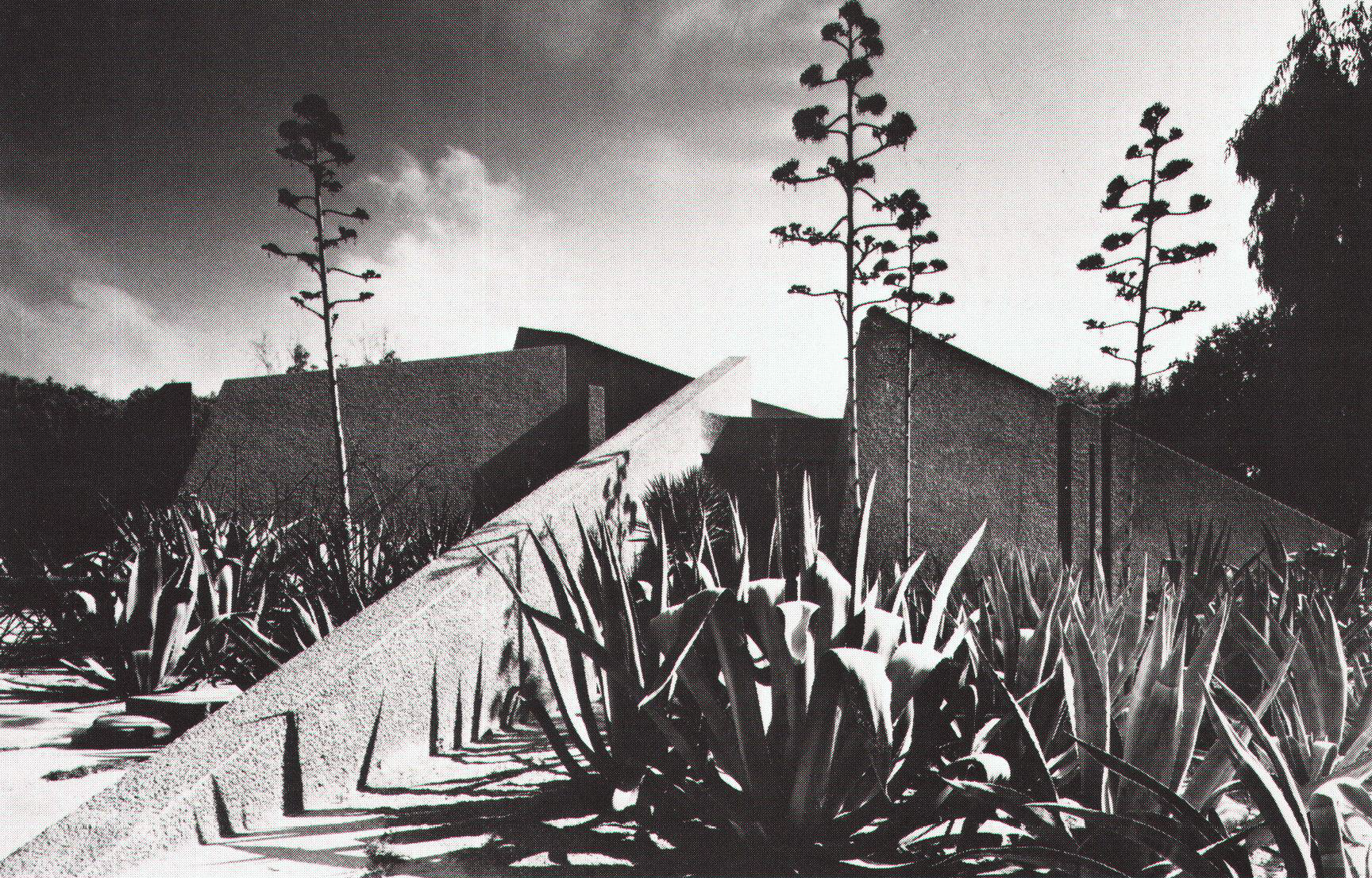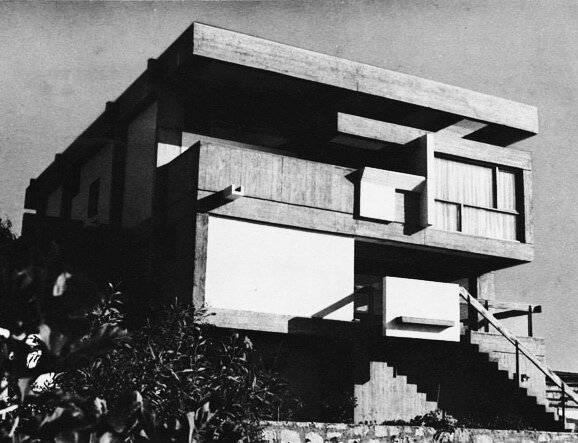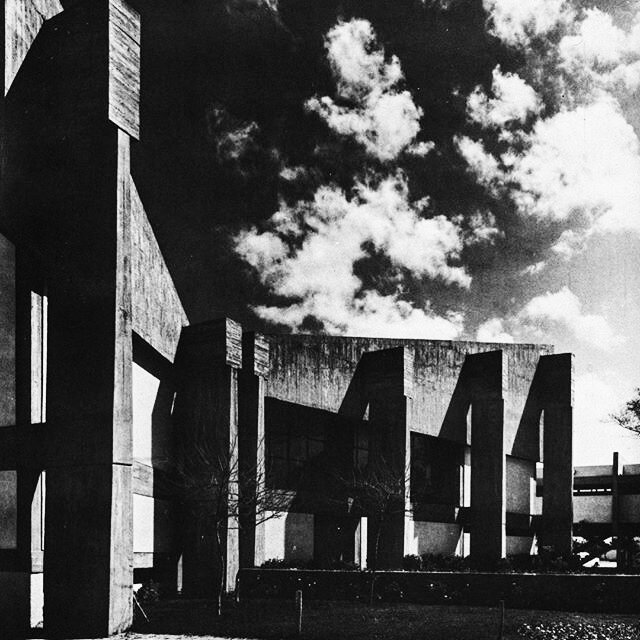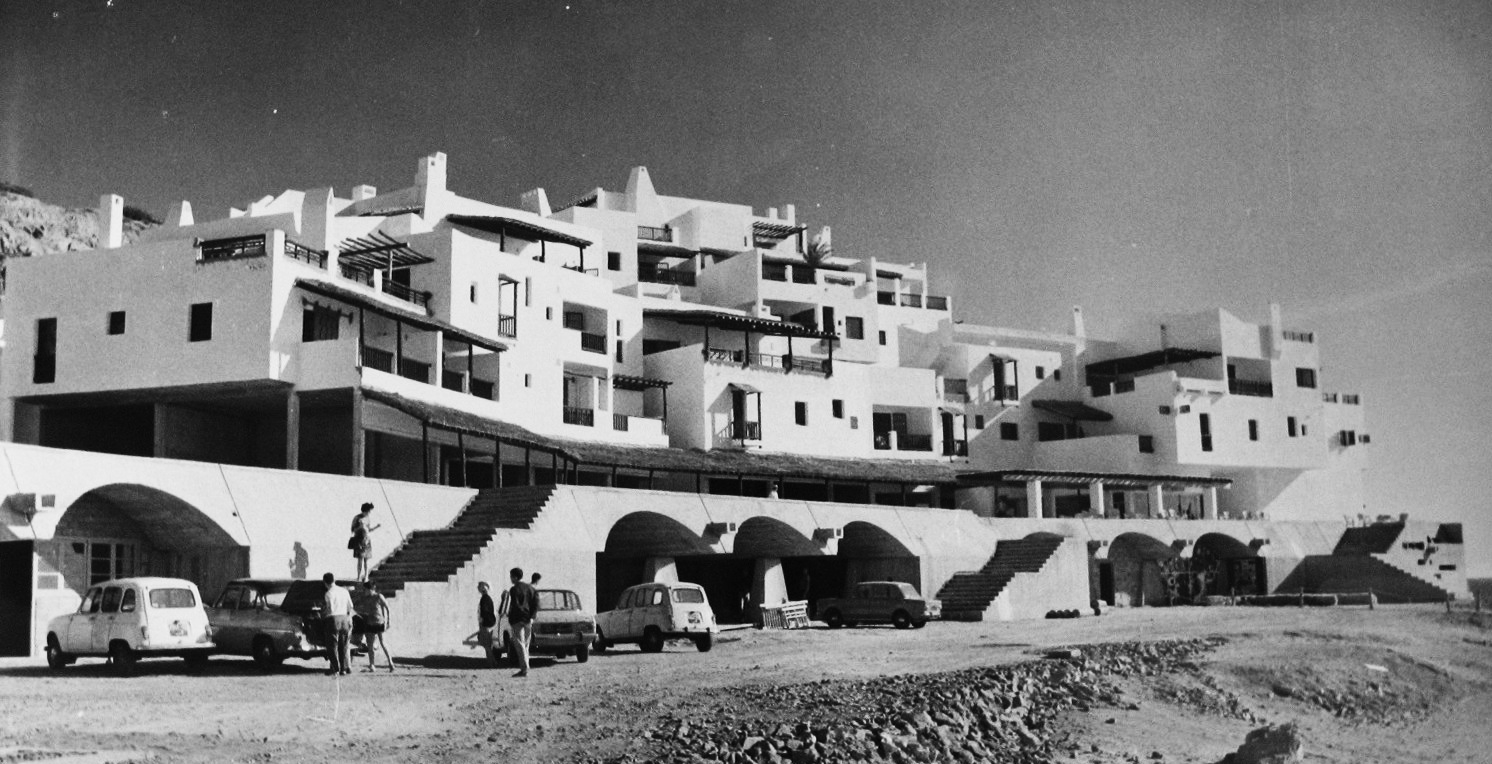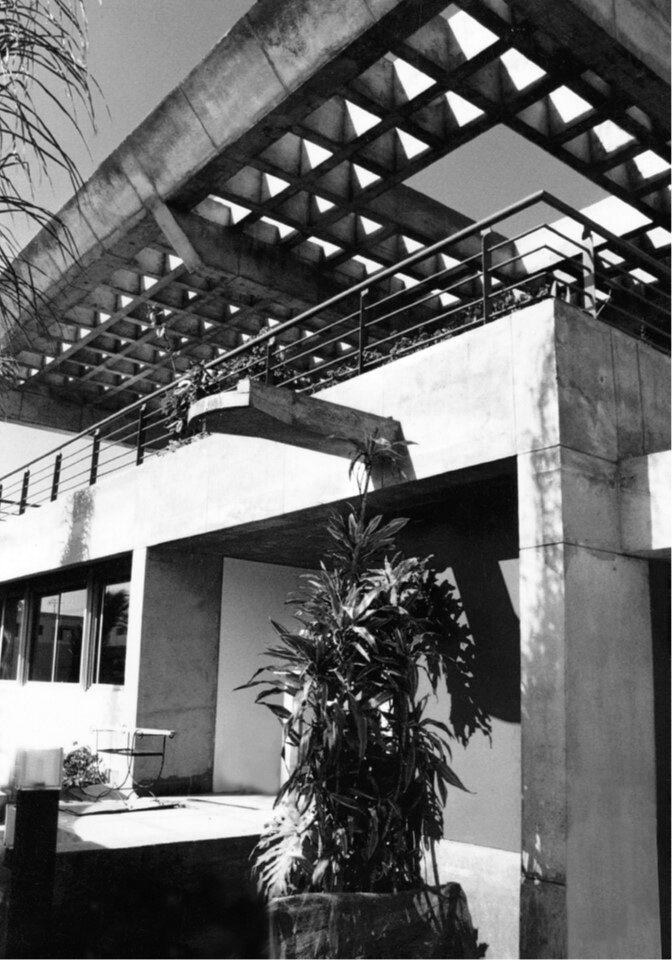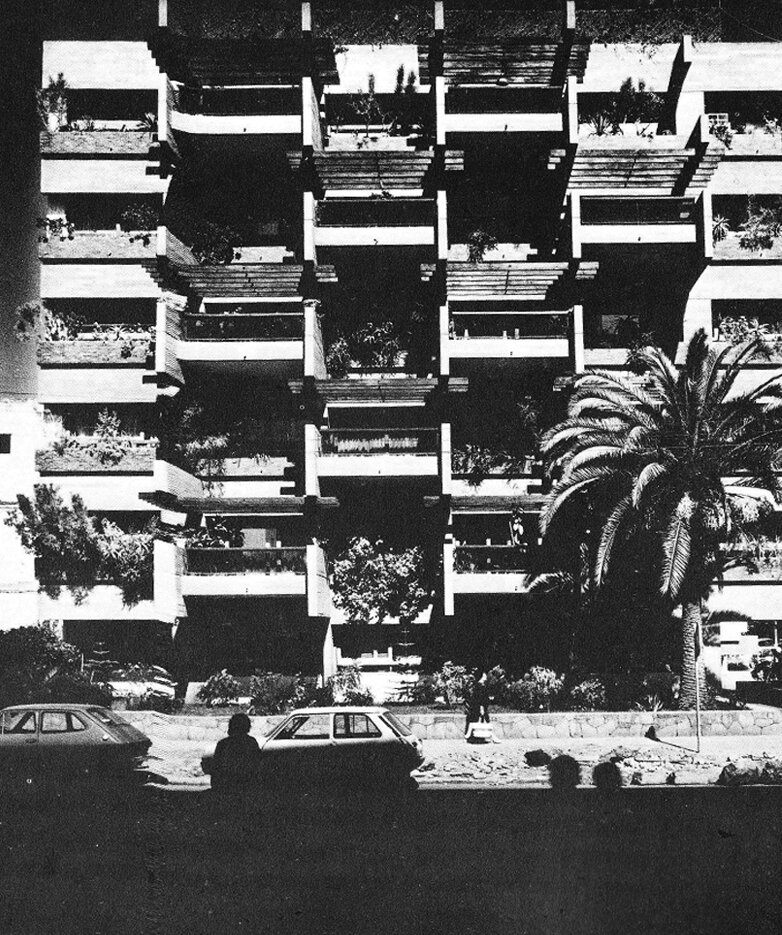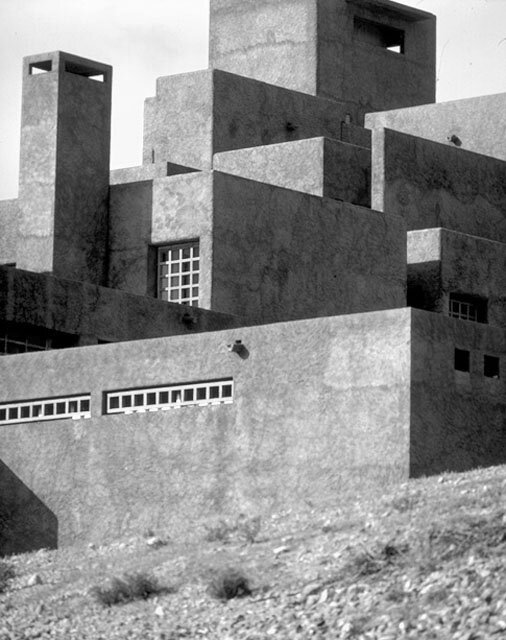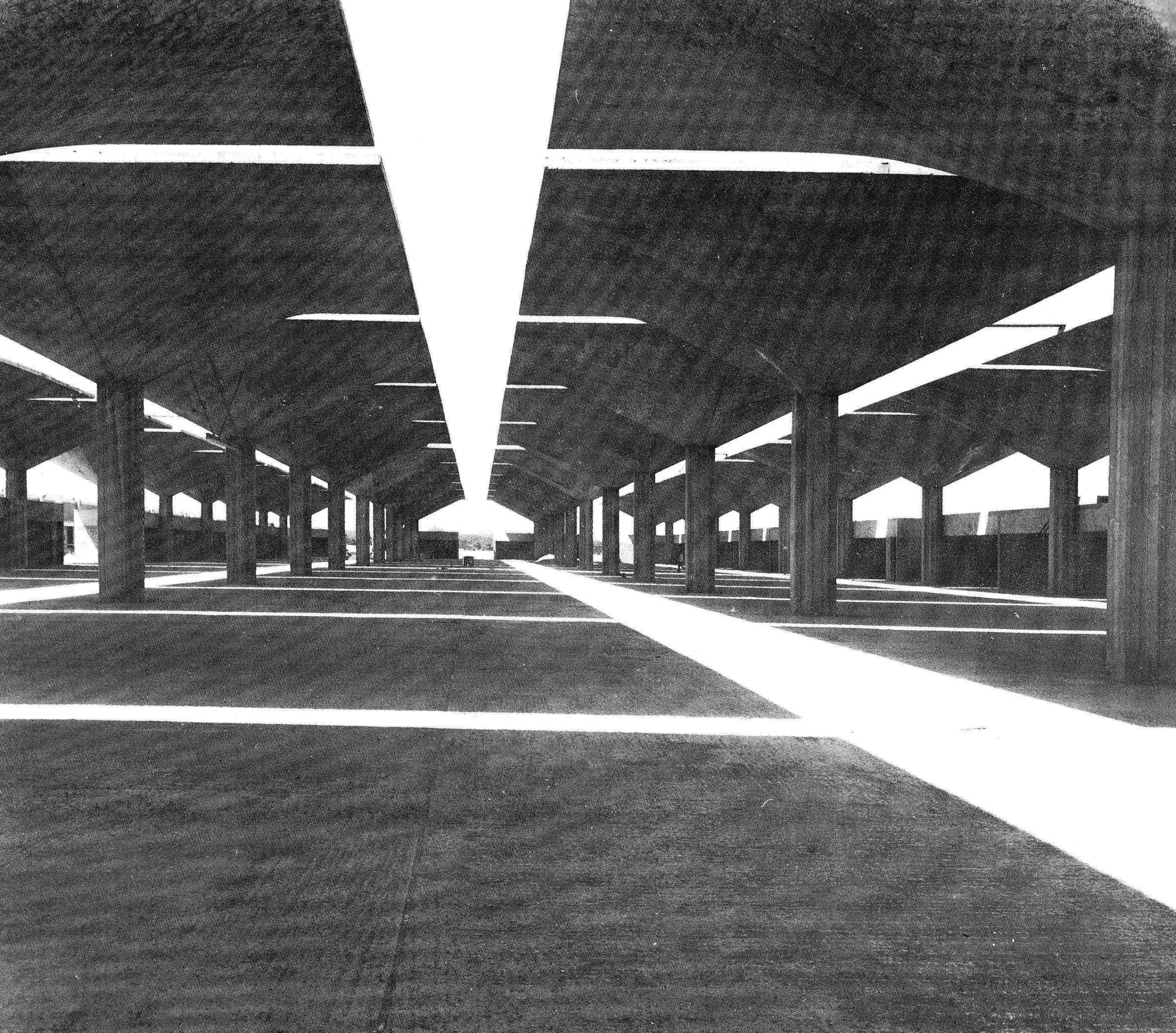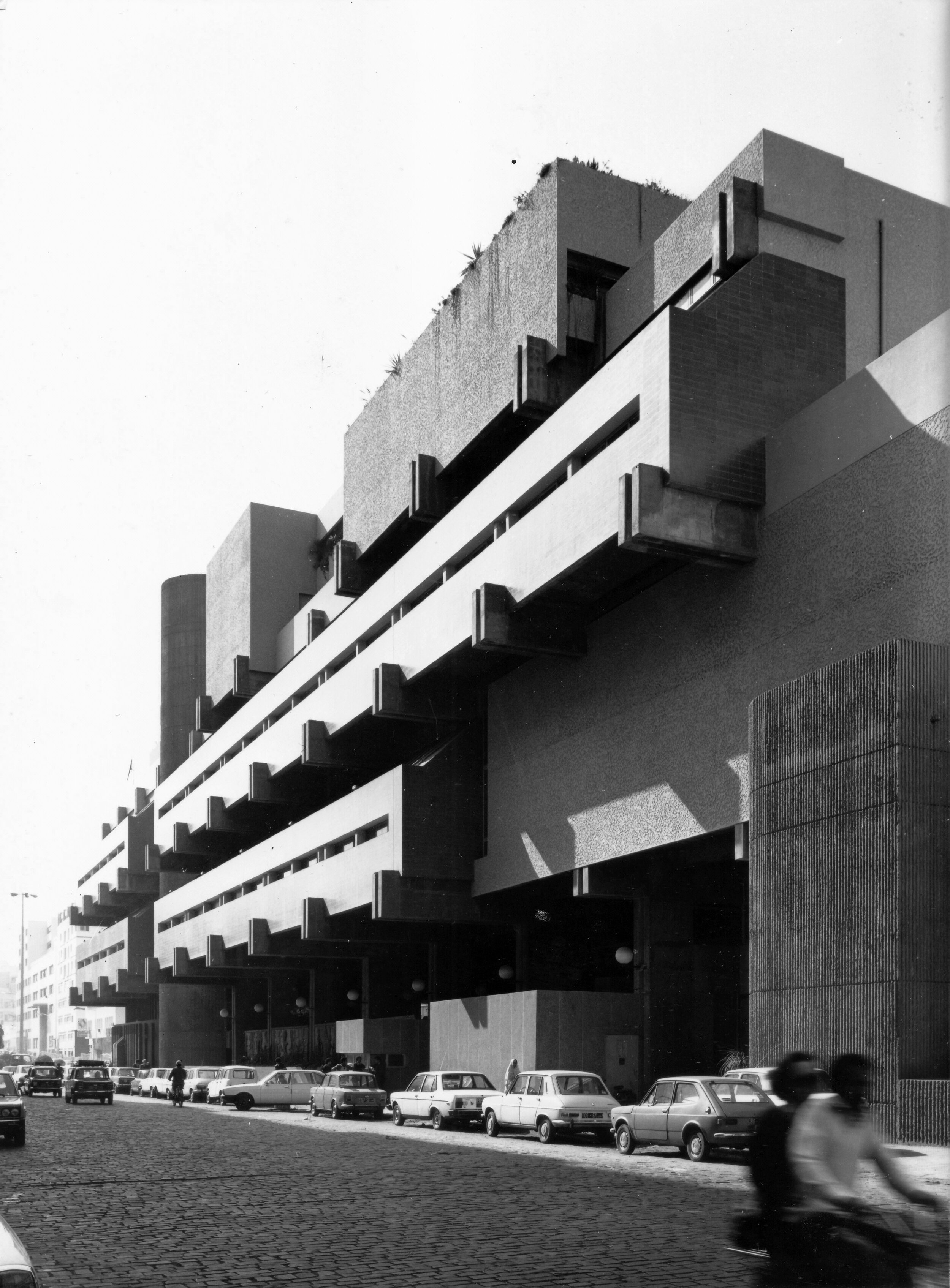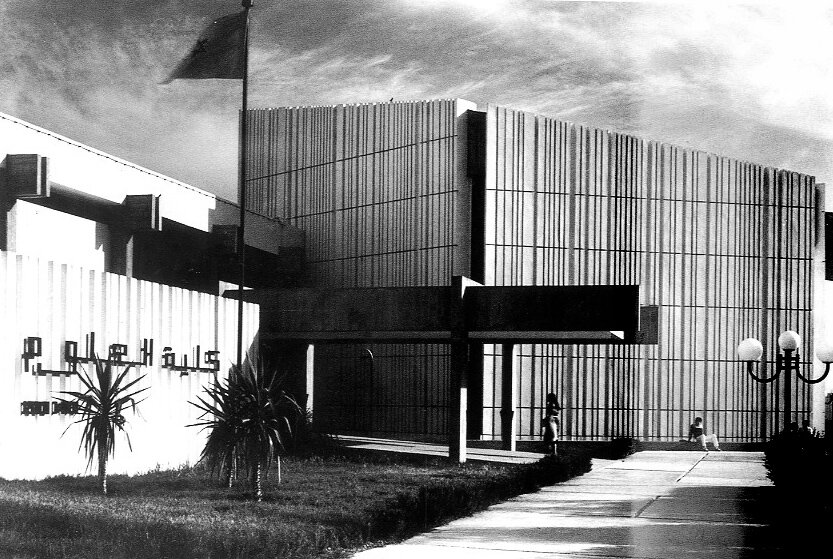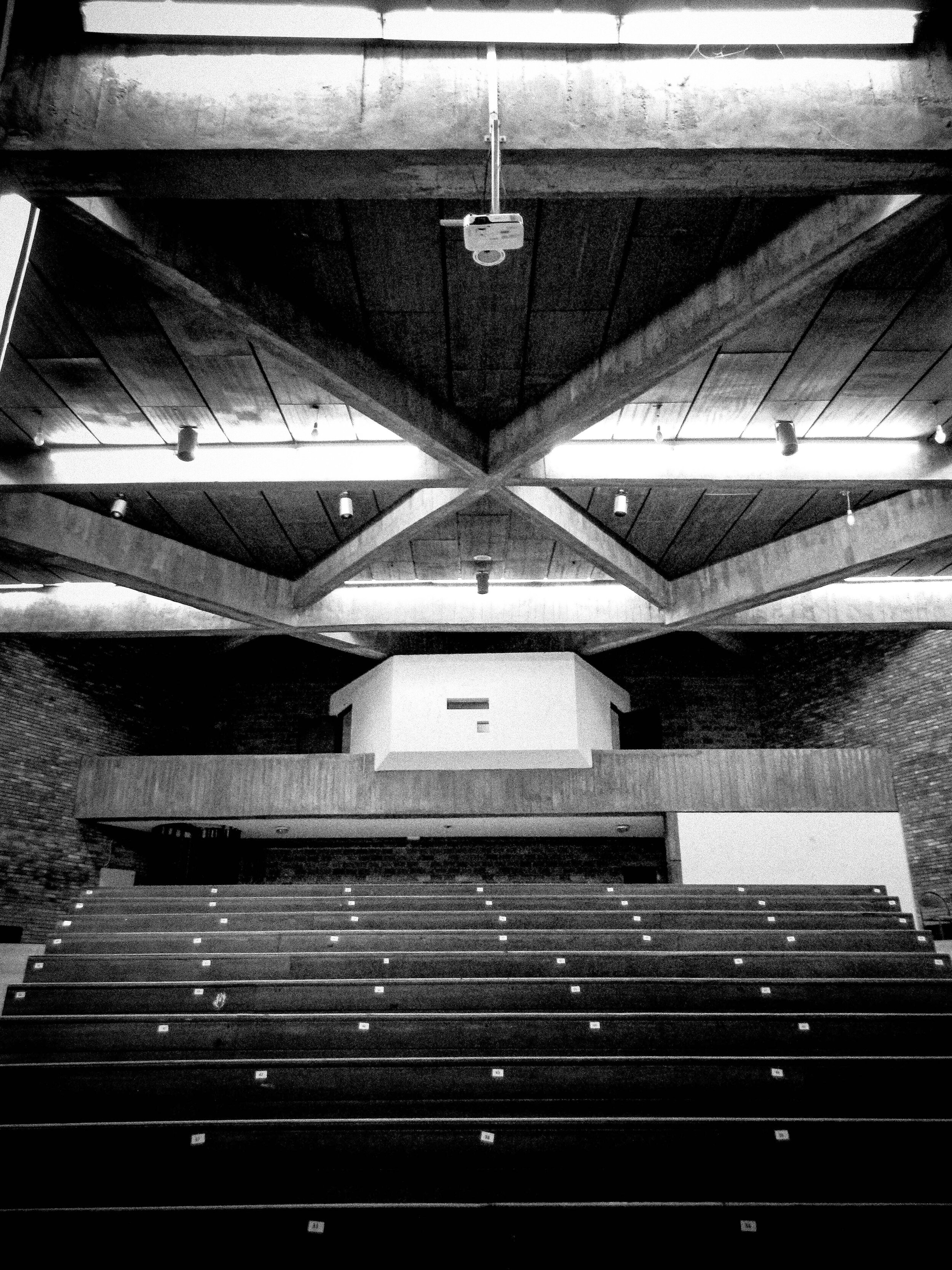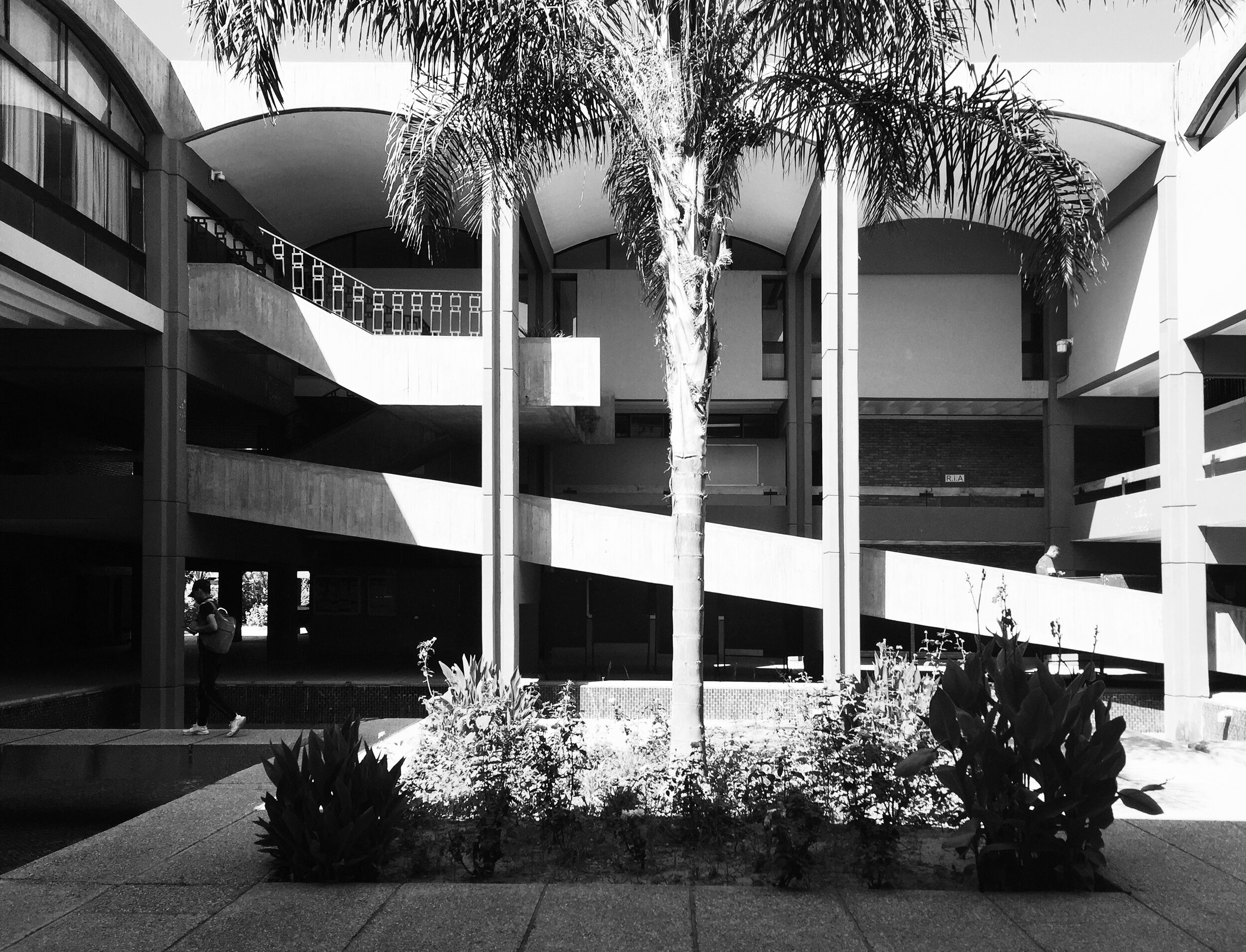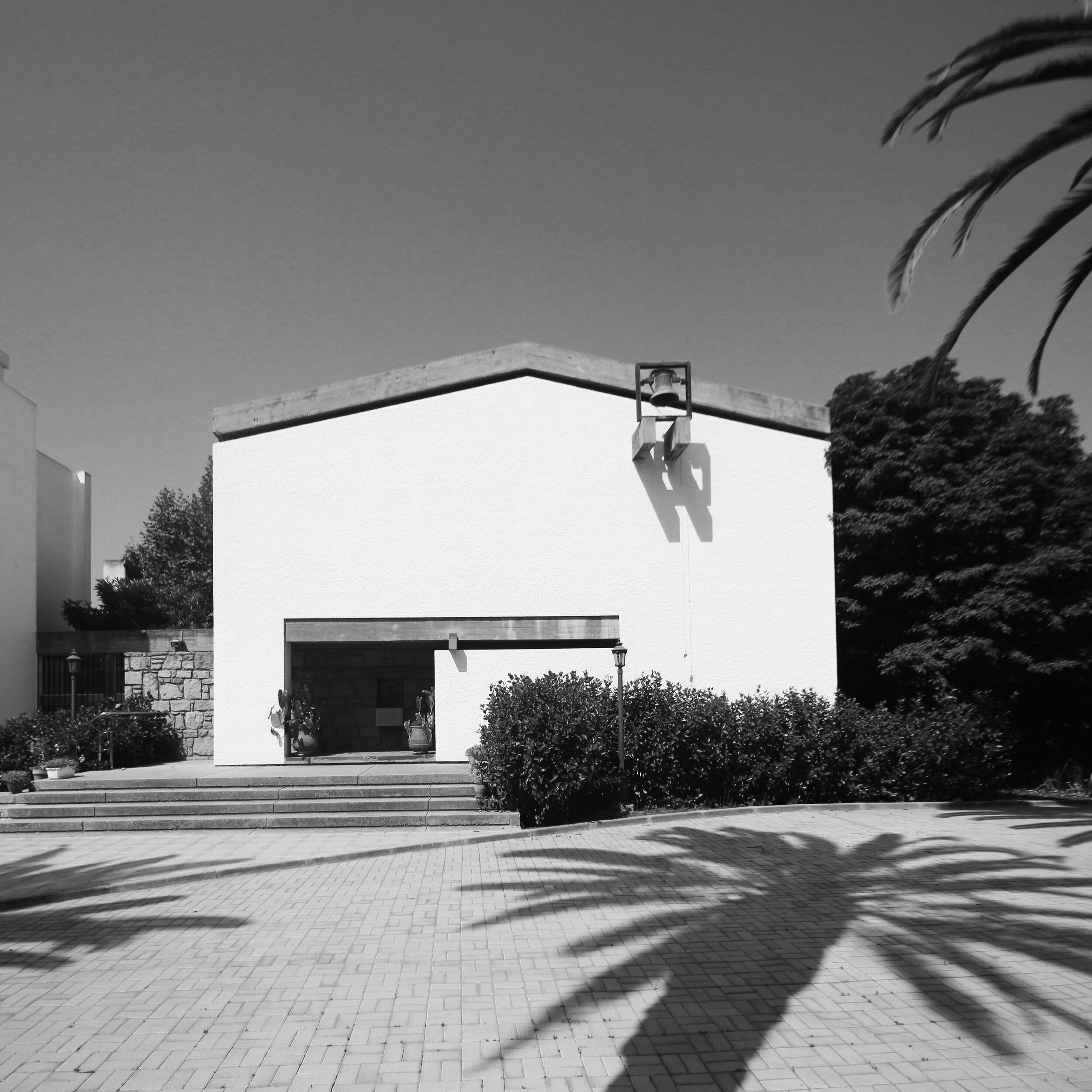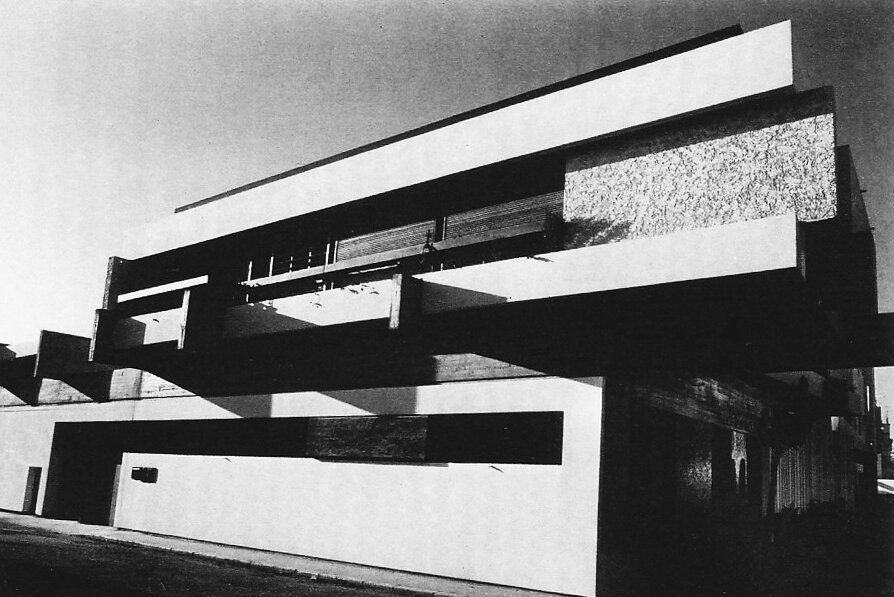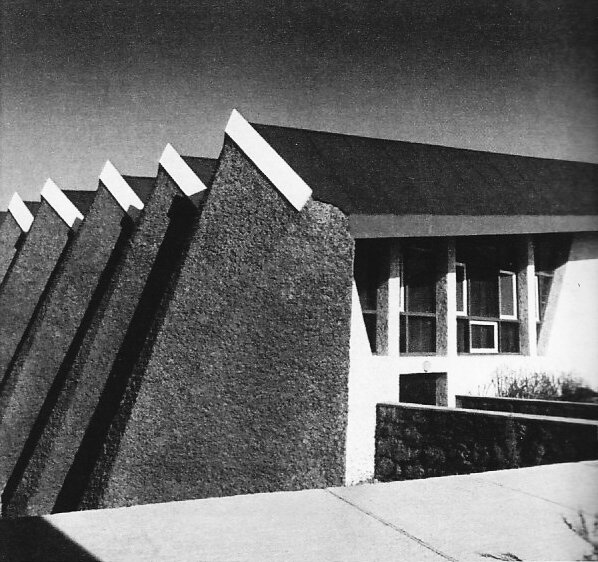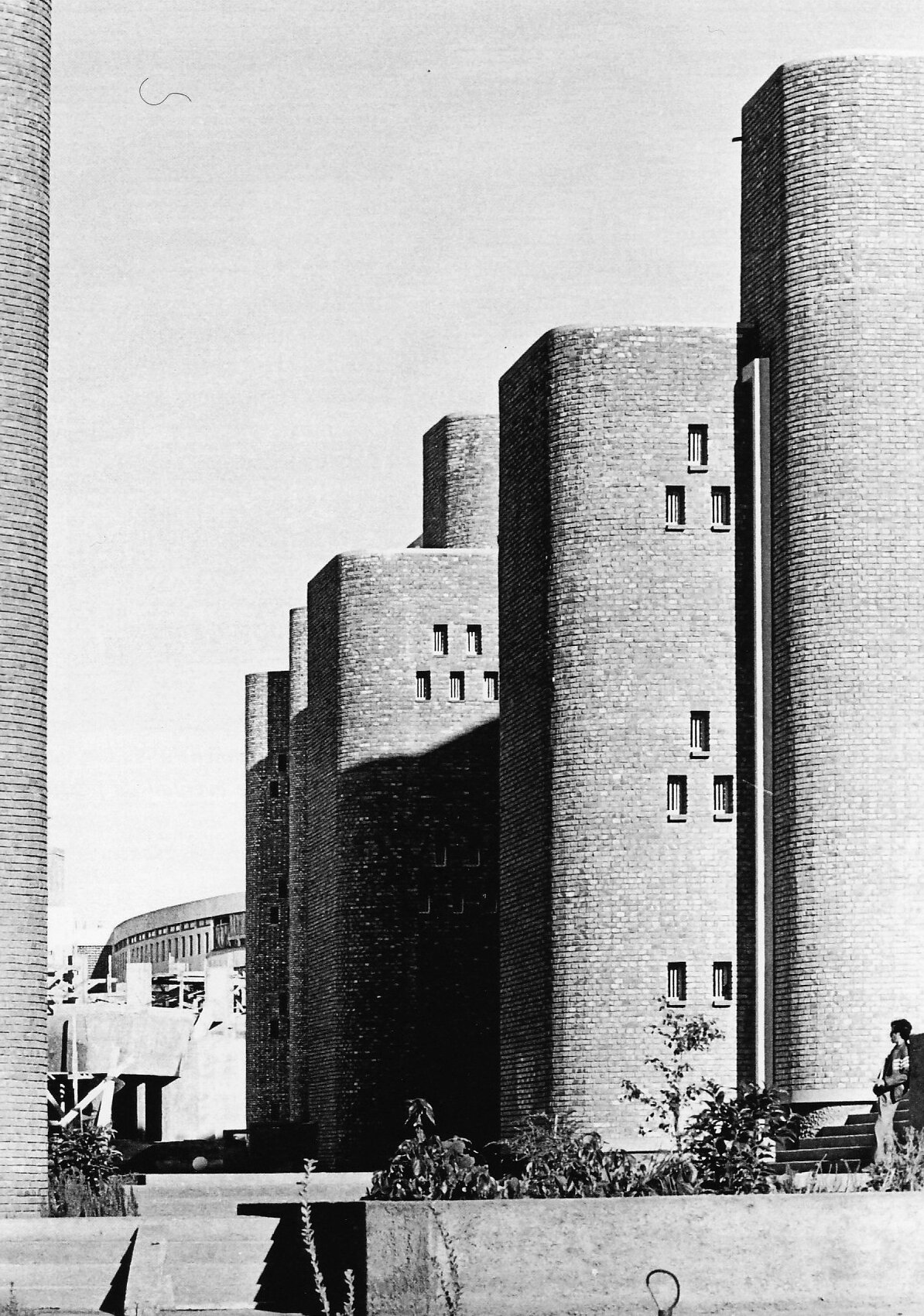Brutalism in Morocco - the case of the school of Rabat
Organized by: The Casamemoire association
Speaker: Imad Dahmani - Architect, professor at the School of Architecture of Casablanca (EAC), president and co-founder of MAMMA. Group (Memory of Modern Moroccan Architects)
As part of the cultural activities relating to the architecture and heritage of Morocco, we were invited by the Casamemoire association (Association for the safeguarding of the architectural heritage of the 20th century in Morocco) to intervene on brutalist architecture in Morocco, but more precisely on “the school of Rabat”.
This intervention revolves around the issue of the genesis and birth of this school, but also the major players in it. However, it is important to link this pivotal period of Moroccan architecture within the context that composes it. For this, we wanted to first define the notion of brutalism as a movement and architectural style in the global context, but also to demonstrate the close relationship that Morocco had with the international by creating a CIAM-Morocco branch which will be called GAMMA (Groups of Modern Moroccan Architects) founded by urban architect Michel Ecochard.
At the end of the Hoddesdon congress in 1951, the GAMMA (Group of Modern Moroccan Architects) was finally accepted as a branch in its own right of the CIAM (...). Much more than in the interwar period, European and French debates are projected onto Moroccan soil
Jean-louis Cohen
ZEVACO Jean-François | Villa Suissa | Casablanca, 1947-49
© Marc Lacroix
AZAGURY Elie | Villa Schulmann | Casablanca, 1952
© Archives Azagury
The architects will build all forms of architecture, spectacular houses will be part either of the GAMMA group like Zevaco, Azagury or Jaubert or others like Lévy and the German Ewerth. Each uses modern principles to respond to demand with an outside look at what is happening across the American and Brazilian Atlantic. The 1950s saw the construction of a dozen boldly shaped villas that impressed Casablancans and European critics.
1. They are admirably organized for those who want and can live with art, the smallest detail of daily life having been patiently studied.
“The expression of the “school of Rabat”, used by Thierry Nadau, refers to the fact that this group of architects, in Rabat but also in Casablanca, produces works bearing a unified modern language and exports it to Agadir in order to adopt for the reconstruction, despite their personality and their diverse origins, a unity of tone and a modern national language.”
Thierry NadaU
The general context since independence in Morocco has been marked by several events. We will note from this generation the loyalty to continue to exercise in Morocco and ready for these new conditions, they felt more at the service of the Moroccan nation than that of a French empire in decline, something that marked the spirit of he architectural unity in the urban landscape of Agadir where the architects as a collective enterprise began often similar approaches, that of a quality architecture, which takes into account the environment and the climate. King Hassan II will support this political effort in 1966:
2. This beautiful effort of integral creation that today speaks to the gaze. It not only pays homage to the collective work that has imposed itself on everyone as a condition of natural necessity, but also to the city as a whole redesigned, remade by man and for man, even vis-à-vis Morocco as it is today. he s dream, wants and realizes.
Thierry Nadau designates this group which sets up the architectural language of Agadir under the name "school of Rabat", he will also describe a cultural, political and artistic environment turned towards modernity, and which allows the construction of a new, national architecture, of which concrete becomes the material of excellence, and the medium of a common language. The exceptional nature of this architecture leaves us with the obligation to take it into account:
3. This architecture must be preserved, safeguarded because it is one of the most beautiful jewels of Morocco's contribution to world culture. Because it is the product of hard work, of devotion to its mission, it is for young Moroccan architects a source of inspiration and much more Moroccan reflection than post-modern manuals. Because it carries within it an original relationship to harmony, it is classic
(1) Casablanca. Mythes et figure d’une aventure urbaine. Jean louis Cohen et Monique Eleb p. 385
(2) Architectures françaises d’outre mer, Culot Maurice et Thiveau jean Marie, p.150
(3) Architectures françaises d’outre mer, Culot Maurice et Thiveau jean Marie, p.163



